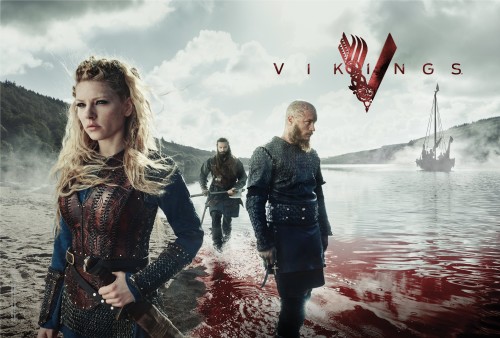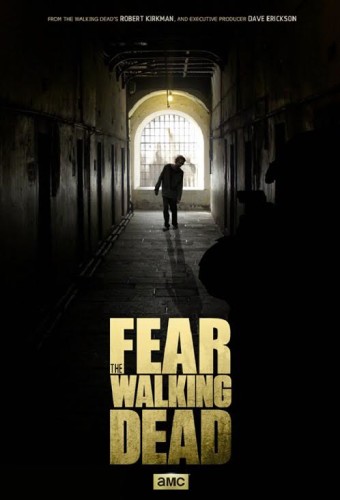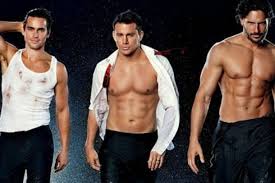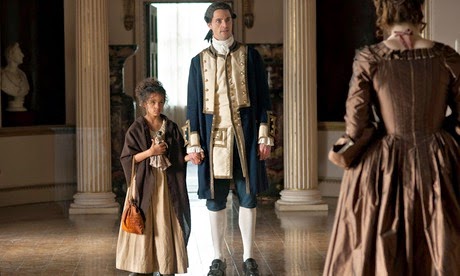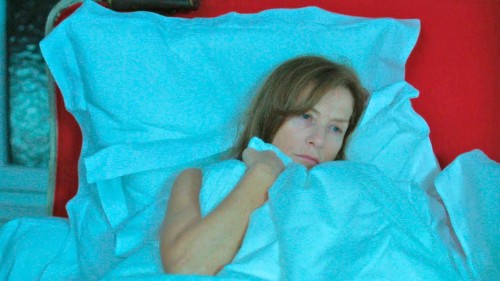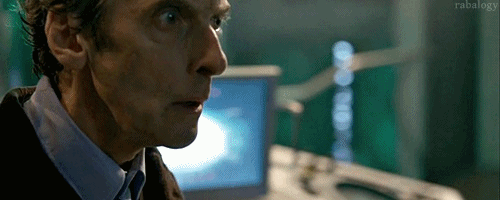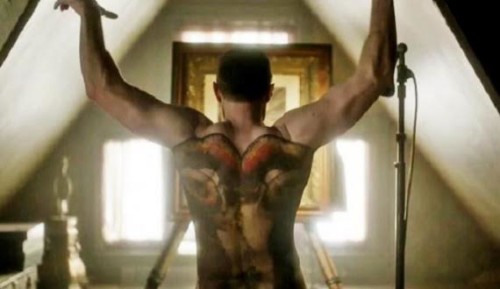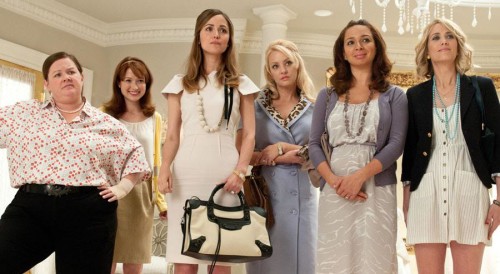This guest post by Rachel Wortherley appears as part of our theme week on The Female Gaze.
In 2015, the film industry continues to designate female characters to the roles of wives, mothers, girlfriends, mistresses, the clever side-kick, or the sassy best friend. While a form of these categories may exist in reality, a three-dimensional approach allows women to be recognizable human beings. They are conflicted, in love, in hate, trying to find their identities, attempting to cling to self-worth. Women are more than the figures who stand ring-side, cheering and watching their husbands become bloodied and bruised. Women are more than the sex kittens who await their lovers in the bedroom, eager to stimulate him after a difficult day at work. It is rare that those images on film, realistic or not, are funneled through the female gaze.

The films Belle (2014) and Beyond the Lights (2014) demonstrate that women are more than objects for consumption. Directors Amma Asante and Gina Prince-Bythewood illustrate that when a story is told through the eyes of the second sex, themes, such as romance, self-worth, and identity are fully fleshed out. By examining an 18th century British aristocrat and a 21st century pop superstar, it proves that in the span of three centuries, women still face adversity in establishing a firm identity, apart from the façade, amongst the white noise of societal expectations.
Belle and Beyond the Lights share a similar narrative: a young woman, who happens to be mixed race, is plucked from obscurity and in time, gains a better way of life. However, to reduce the dramas to a single line discredits their significance within feminine literature in film. Generally speaking, British-born Gugu Mbatha-Raw is the thread that links both movies. After a few false starts on the small screen, specifically the J.J. Abrams-produced NBC spy drama, Undercovers (2010) and the FOX drama, Touch (2012-13), Mbatha-Raw found her place as the leading lady in two revolutionary films of 2014. Mbatha-Raw, who is a RADA graduate (Royal Academy of Dramatic Art), joins the ranks of several English actors and actresses who continue to penetrate North America with their diverse talent. Within a year, Gugu, who, as Ophelia, shared the Broadway stage in 2006 with Jude Law in Hamlet, transformed from an 18th century, aristocratic historical figure to a sexy, fledgling popstar. Mbatha-Raw offers sheer strength and vulnerability behind the eyes of Dido Elizabeth Belle Lindsay and Noni Jean.

Dido Elizabeth Belle Lindsay is the illegitimate daughter of British naval officer, Sir John Lindsay (Matthew Goode) and African slave mother, Maria Belle. Upon her mother’s death, Sir John rescues a young Dido from the squalor of the slums and is in turn raised by her great-uncle, Lord Mansfield (Tom Wilkinson) and his wife, Lady Mansfield (Emily Watson). Sir John legitimizes his daughter by bequeathing her the name of Lindsay, as well as, demanding that she be raised with her cousin, Elizabeth Murray (Sarah Gadon). In the 18th century, when colonization and slavery is the norm, Sir John makes a brave and radical decision.
Here, writers and producers could have taken advantage of this rich story by constructing it from the male perspective. Through the male gaze it would read as the story of a single father who fights through tempestuous, natural elements to find his mixed race daughter. Upon finding her, Sir John Lindsay has to deal with the pain of leaving his newfound kin for a voyage, and remain stoic amongst the ridicule from his peers. The narrative would then end with his sad demise, never having known Dido. However, audiences watch the 10-year-old curiously gazing at the portraits of her new family. As her aunt and uncle discuss how they will rear Dido, Lady Mansfield questions, where Dido’s race should be placed, “above, or below her bloodline?” The director cuts to an adult Dido who is deliriously giggling with her cousin, Elizabeth. They are inseparable and equals, until the question of marriage emerges.

Dido is at an impasse in society; with her new fortune (2,000 pounds a year left by her deceased father), her aunt and uncle surmise that no aristocratic family will welcome a mulatto and if she marries a man with no title, she risks her rank. While Dido is too high in rank to dine with the servants and too low in rank to dine with members of aristocracy (outside of the family), she continues to carry herself with great dignity. When her future suitor, John Davinier (Sam Reid), addresses her informally, Dido asserts that Davinier speak through the house servant since they have not been formally introduced. To not do so, would compromise social decorum.
Throughout the film, Dido manages to stand up for her self-worth in front of others who threaten to destroy it. Upon Lady Elizabeth’s coming out in London, Lord and Lady Mansfield decide that Dido should stay behind and maintain the house while they are away. There is a striking close up of Lord Mansfield unfastening his keys and Dido with horror on her face as she exclaims, “I am not an old maid!”—their aunt, Lady Mary (Penelope Wilton) is too old to continue to keep watch. The frantic nature in which Lord Mansfield unhooks the charcoaled keys from his hip, paired with Dido’s reaction evokes the images of a slave being punished by their master. Dido cries, “Why are you punishing me?” This softens Lord Mansfield who reassures her that she is most loved. Dido is also concerned that her dignity will be compromised in the portrait of her and Lady Elizabeth. Adult Dido is worried that her image will be reduced to that of a subordinate depicted in all the family portraits along the walls of the house. In the end, Dido is depicted beside Elizabeth, as her equal.
Beyond the Lights begins similarly to Belle, where audiences are introduced to the main character as a child. It is significant that Asante and Prince-Bythewood choose to begin at childhood—our formative years. Noni Jean, who is around 10-12 years of age, is placed on the stage of a talent show and she sings Nina Simone’s “Blackbird.” She settles for the runner-up trophy that her mother, Macy Jean (Minnie Driver), immediately commands her to trash because Noni should never settle for second place.

The camera cuts to a young woman, scantily clad in rubber, with a bare midriff, and sky-high boots as she sings and gyrates in the midst of studio produced hip-hop beats. A rapper, Kid Culprit (Machine Gun Kelly), fondles her. It is adult Noni, who has transformed from the little girl with pigtails to a sexy songstress. She is wildly popular in the music industry and has a hit record before her debut album has been released. However, she finds herself dangling from her hotel terrace with a tear-stained face whispering, “You still can’t see me,” to which Officer Kaz Nicol (Nate Parker) replies, “I see you,” as he grasps her hand and pulls her to safety.

The aftermath of Noni’s suicide attempt does not evoke concern from the parties who hold stock in her image. Her mother reminds her that she has the luxury of fame and fortune. Her record label reprimands Noni for the “accident” and threatens to drop her from the company. She has to maintain the image of the girl who men want and who women want to become. The night of Noni’s suicide attempt, her self-worth was at a low. She is the girl whose image is produced by her inner circle and the media consumes it. Instead of looking at her, they look through her.
Noni’s lack of self-worth is surmounted during her BET performance. As her dancers and Kid Culprit try to open her trench coat to reveal her half-naked body, Noni fights to keep it on. Kid Culprit roughly throws Noni on the staged-bed, attempts to shove her face into his crotch, and violently yanks Noni trench coat, revealing what she tried to conceal. Kid’s act of revenge culminates by his declaration that he dumped Noni. No one dumps Kid Culprit for another man. This moment is comparable to James Ashford’s assault of Dido as a form of degradation and assertion of power. In 2015, women continue to face assault from men when their advances are rebuffed.
In many ways, Dido is looked at as an object for consumption. Dido’s first suitor, Oliver Ashford, sees her as “rare and exotic,” while his brother, James, who is disgusted by Dido, stresses that “one does not make a wife of the rare and exotic. One samples it on the cotton fields of the Indies.” When Dido chooses not to wed Oliver, her family supports her decision, rather than reprimanding the choice. The only suitor who looks beyond Dido’s race is John Davinier—he is the reverend’s son and Lord Mansfield’s pupil. He presents the question of whether she would reduce herself for the sake of rank. The Zong Ship case, the assault, and John’s question helps her decide that she cannot marry into a family who will see her skin color as a burden, or affliction.
Kaz’s heroic action momentarily positions him as Noni’s savior. After their encounter, Noni has the choice to cut ties with him—even after he appears outside her hotel the following night to check on her—but she chooses to leave with him. With Kaz, Noni is able to eat chicken and fries, share her hidden box of songs, and in the most beautiful part of the film, she literally lets her hair down. Noni’s removal of her acrylic nails and extensions is her realization that she is more than the sexy images mounted on the walls. When he softly touches her face, reaches out and “boings” her natural curls, and kisses every inch of her face, audiences see her inner beauty. When she approaches Kid Culprit or walks on stage, it is always, shoulders back, boobs out, with a sultry look on her face. This is the first time Noni’s eyes are free of conflicting thoughts; constantly strategizing how she will present herself.

Beyond the Lights can be vaguely compared to the Richard Curtis film, Notting Hill (1999), in which an ordinary man’s life is changed when a beautiful actress walks into his bookstore. They fall in love, live happily ever after, and she abandons fame and fortune. Yet Notting Hill is written from the perspective of Will Thacker (Hugh Grant). It depicts how his dull life is changed when meets Anna (Julia Roberts) and how empty he is in her absence. As in Prince-Bythewood’s debut romantic drama, Love and Basketball, women are proactive in seeking romance. Monica (Sanaa Lathan) challenges Quincy (Omar Epps) to a game of one and one for his heart. Dido and Noni dictate which relationship they deem appropriate to pursue. Dido chooses John Davinier, while Noni chooses Kaz over Kid Culprit. They choose partners who will respect their newfound sense of self-worth and identity.
Ultimately, Dido and Noni’s suitors help them realize their new selves. However, it is exactly that, help. Dido does not reject Oliver’s marriage proposal because she is in love with John. She rejects it because she is comfortable in her skin and realizes her worth. It is a far cry from the Dido, who at the beginning of the film, gazes upon her image in the mirror and in tears, claws and beats at her breast. Though she must carry the burden of being looked down upon by members within her society, one that Dido is willing to undertake. At the end of Beyond the Lights, Noni stands up to her record label and pushy “momager,” and returns to England, where she presents her true identity on stage. She is wide-eyed, curly-haired, and sings, not underneath suggestive lyrics or studio produced beats, but with a live band and lyrics that come from her heart. As she stage dives into the pit of screaming fans, Noni beams with pride. Kaz showing up to support Noni, elevates her decision to follow her heart personally and professionally. Dido and Noni decide to follow through with the advice employed by their respective suitors. Again, choice is the key idea.
Belle and Beyond the Lights are films that are for women because they truly capture what it is like to be marginalized by society while working through personal growth. What is seen through the gaze of Dido and Noni’s narratives is that in order to function as a rich and diverse character, society must learn to be comfortable with women forming identities independent of two-dimensional categories.
Rachel Wortherley earned a Master of Arts degree at Iona College in New Rochelle, New York. Her downtime consists of devouring copious amounts of literature, films, and Netflix. She hopes earn an MFA and become a professional screenwriter.






